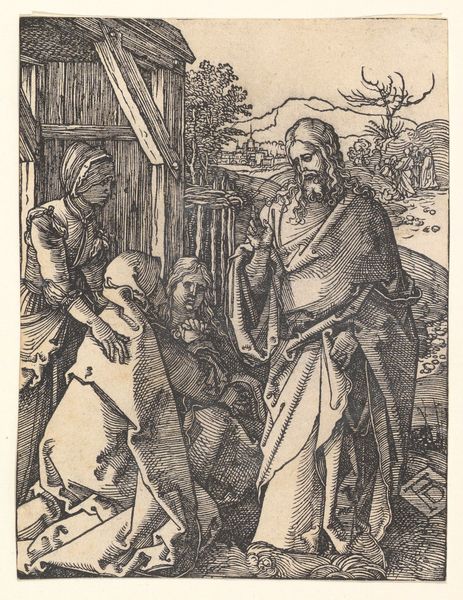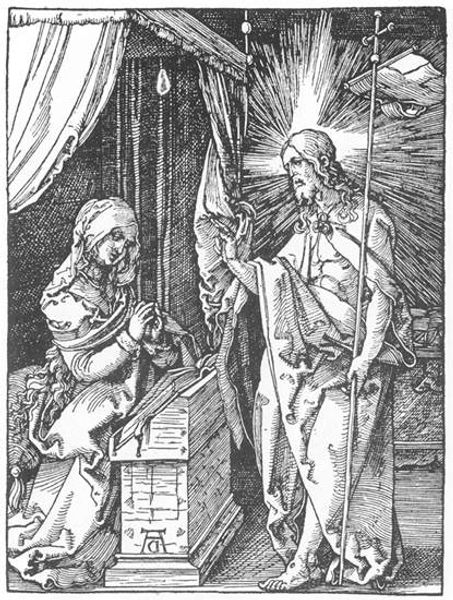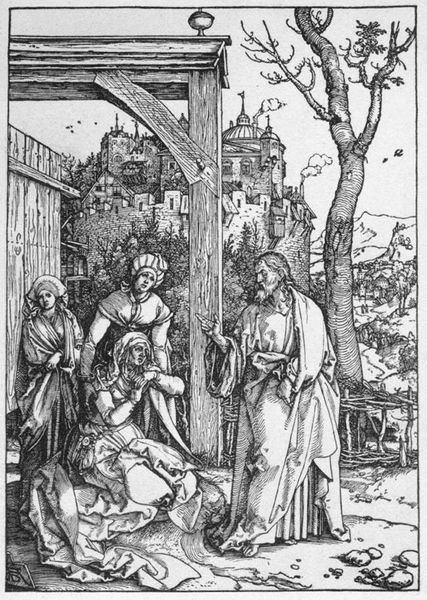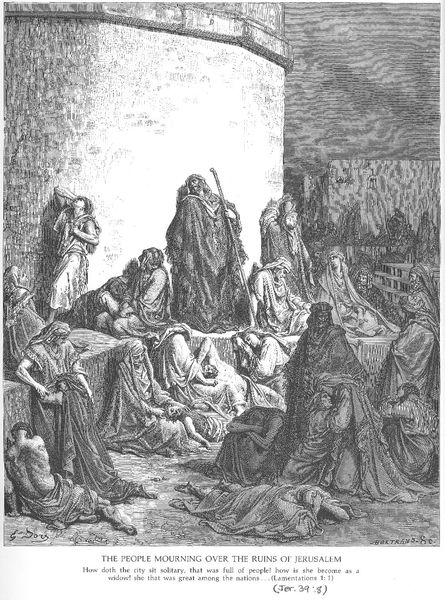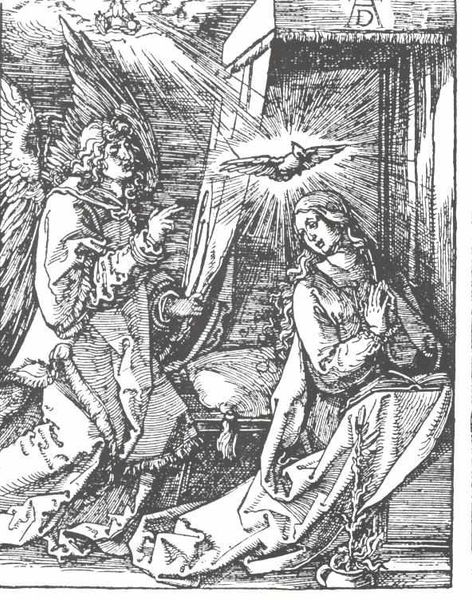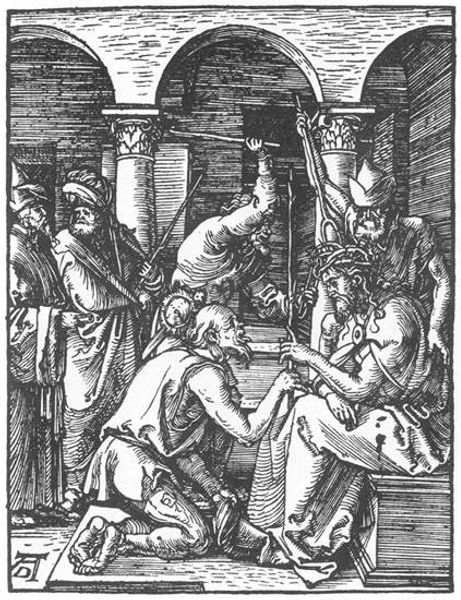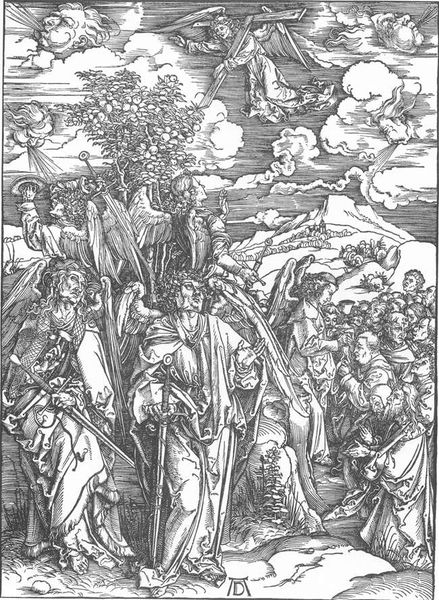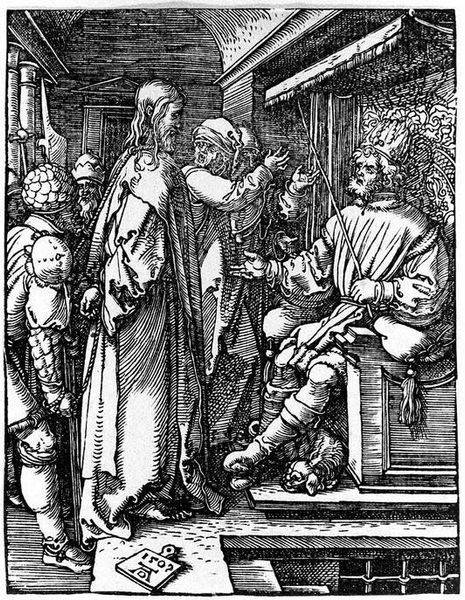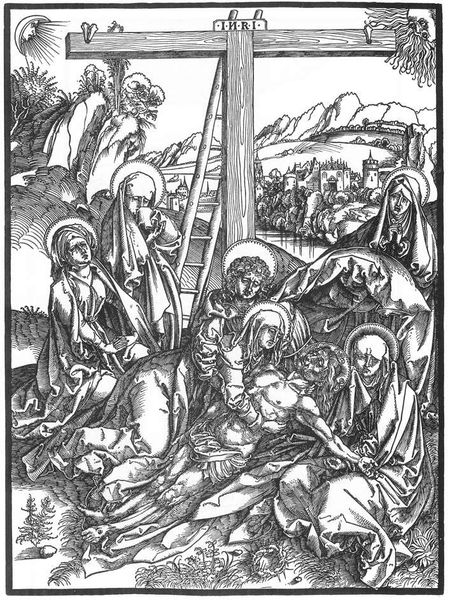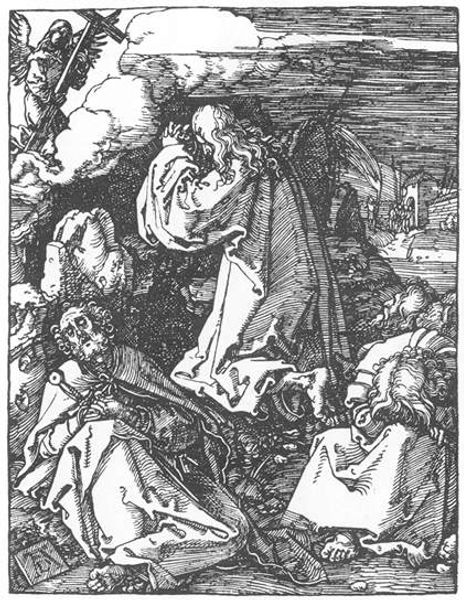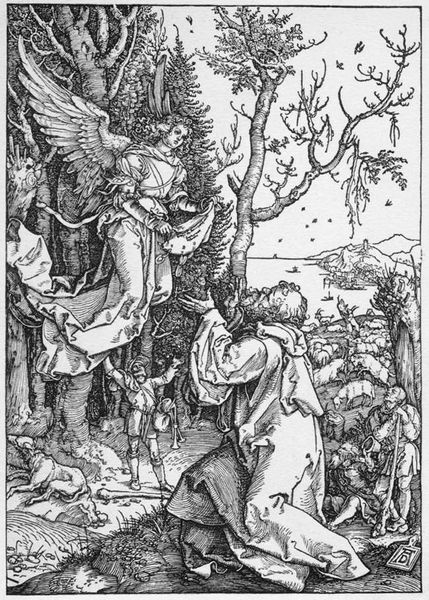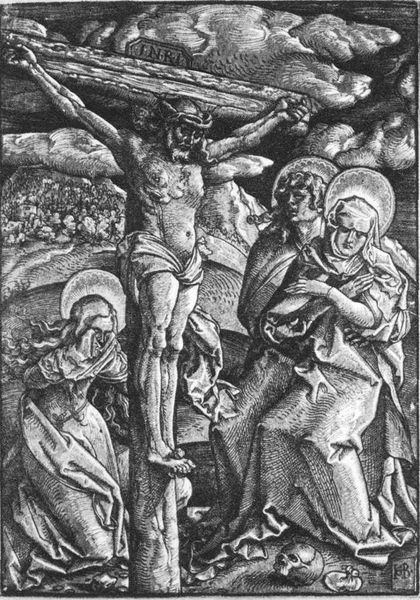
drawing, print, woodcut
#
portrait
#
drawing
# print
#
pen illustration
#
landscape
#
figuration
#
arch
#
woodcut
#
christianity
#
history-painting
#
northern-renaissance
#
virgin-mary
#
angel
#
christ
Copyright: Public domain
Curator: The stark black and white, the dramatic tension – it just leaps out at you, doesn't it? The vulnerability… I'm immediately struck. Editor: It really does, especially given it's a print. We're looking at "Christ Taking Leave of His Mother" created in 1511 by Albrecht Durer, a woodcut, actually. That intensity is partially inherent to the medium itself, so it bears closer consideration. Curator: Right, that’s the Northern Renaissance edge! It’s there in the density of lines and shadows, this palpable grief just emanating. Everyone huddled, collapsed nearly, around Christ… as if to keep him tethered. Editor: Exactly. In iconographic terms, the scene depicts the moment before Christ's Passion. Consider the enclosed garden in the background and the figures waiting outside the city gate—symbols laden with premonition. Even the discarded sandal is potent; a representation of holy ground about to be desecrated. Curator: Discarded sandal, love that! He's quite deliberately *walking away* from everything maternal, all that's grounded and safe…towards something terrifying and fated. Even Mary's partially veiled, a powerful symbolic gesture, right? Showing not just mourning, but perhaps even unknowing of his final sacrifice, the sheer intensity of the pain. Editor: Undoubtedly. The veil’s shadow speaks volumes of obscured truths and inevitable suffering, common visual indicators in religious art from this period. But Durer also subverts the usual, stoic presentation of such imagery. The collapsing figures suggest more psychological realism. Curator: Precisely! These aren't just biblical figures; they're raw, relatable. It’s such an intense personal vision too, you know? Durer really imbues them with the weight of universal parental love. Editor: A profound sense of empathy… he compels us to engage emotionally before even understanding the theological nuances. Quite typical of Northern artists in that time. And that mark? A masterful stroke. Curator: True, I feel I know Durer a bit more, a tender fellow indeed, seeing this print. Editor: Agreed. He shows us how images distill centuries of cultural and religious feelings down into moments that continue to feel utterly present and potent.
Comments
No comments
Be the first to comment and join the conversation on the ultimate creative platform.
